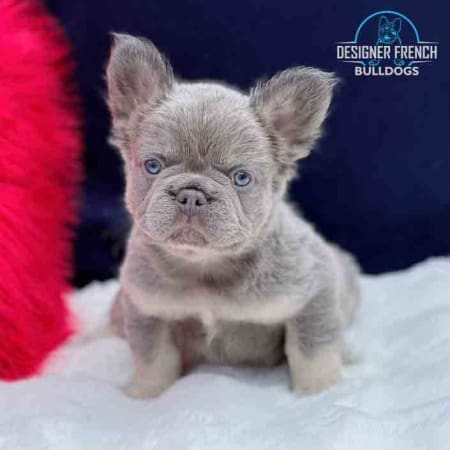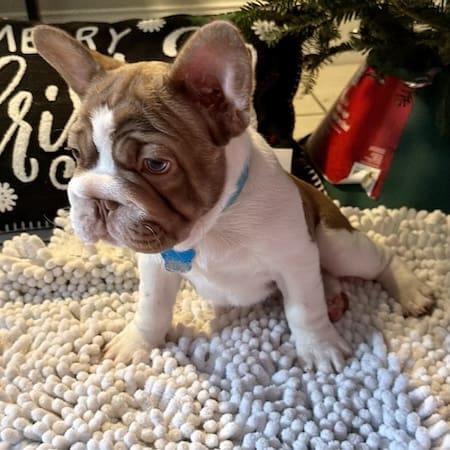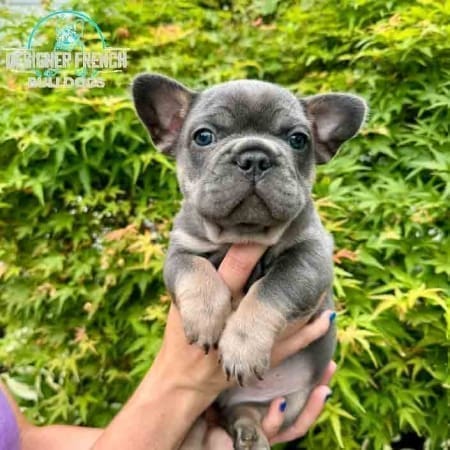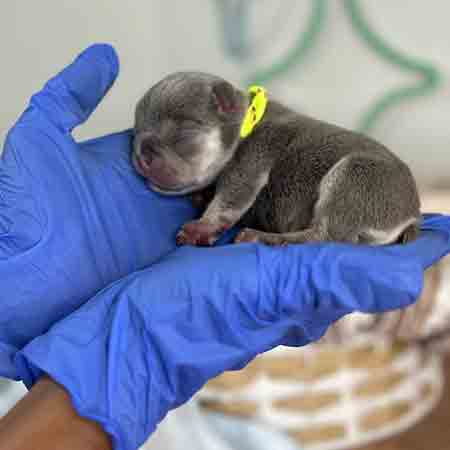French Bulldog Genetics
The coat color genes in the French Bulldog genetics color panel are E, A, D, K & S There are a number of genes which interact to dictate the coat colour of a dog – the genes tested in this panel are the main ones which dictate the coat colour in French bulldogs. Colours which dogs carry are often hidden, but become apparent in their offspring. It is in identifying these hidden genes that genetic testing has value.
French Bulldog Genetics
Isabella french bulldog puppies are the some of the rarest of all colors. More common colors include the black french bulldog, the black and tan frenchie and the fawn colored dog. Colors typically dictate the pricing as well as the parents cost, genetic lineage and coat types. Less common include the blue frenchie, the lilac french bulldog color and more.
Lilac french bulldog price range is usually above 7000 where as blue frenchie can be a tad lower. Keep in mind with some of the newest French Bulldog colors, the AKC only recognizes some. This does not mean you cannot fully register your new French Bulldog puppy, but just means you may not be able to choose the exact name for the color.
French Bulldog Genetic Testing
Genetic testing can be used to identify some of the genes that a dog carries, and to help identify the possible outcome when dogs are bred. As with all genetic traits, every animal inherits one copy of each locus from each of its parents. So each gene test gives two results for each dog – one has come from his father and the other his mother. These are usually written one after the other e.g. at at. Further details about each of the gene tests follows below.
French Bulldog Genes and Genetics explained
E Gene: In Frenchies for sale the production of the two pigments eumelanin (black) and pheomelanin (red/yellow/cream) is controlled by the Melanocortin 1 Receptor (MC1R) gene, also known as Extension. The four alleles (variants) of this gene are, in order of dominance: melanistic mask (E m), grizzle (E g ), black (E) and red (e).
Frenchie Genetics
Some dog breeds are fixed for either black or red pigment, such as the Large Munsterlander for black and Irish Setters for red. Melanistic face mask is found in a variety of breeds including but not limited to Afghans, Akitas, Boxers, French Bulldogs, German Shepherds, Great Danes, Greyhounds, Pug Dogs and Whippets. For Pug Dogs and Boxers the trait is fixed, while it is variable in other breeds. Dogs that are overall eumelanistic (black, blue or brown) may have the mask but it is indistinguishable from the body colour.
French Bulldog Genetics and Masks/Muzzles
Dogs with white muzzles may have the mask gene but expression is overridden by white spotting patterns. The mask phenotype is caused by the E m variant at the MC1R gene.
Grizzle (also called domino) is a pattern of dark pigment (eumelanin) on the dorsal surface of the head, body and tops of the legs; light pigment (pheomelanin) is present on the lower legs, undersides and up the face around the eyes. The distinctive face pattern is often referred to as a widow’s peak.
A Gene with French Bulldog Genetics
A Gene: The Agouti Signaling Protein (ASIP) gene interacts with the MC1r gene to control red and black pigment switching in most mammals including dogs. Dog coat colour is further complicated by the interaction of other genes that restrict agouti expression such as the dominant black gene – Beta-Defensin 103.
different types of color alleles
There are 4 known alleles (variants) of agouti listed here with corresponding color pattern in order of dominance: fawn/ sable (ay ) yellow to red with some dorsal black tipped hairs, wild sable (aw ) banded hairs of yellow and black as in seen in wolves and coyotes, black and-tan (at ) black dorsal hairs with tan hair on cheeks, eyebrows and undersides, and recessive black (a) all black as seen in some herding dogs.
French Bulldog Genetics Continued
This test will help determine possible coat color outcomes from specific matings. Results are reported as: a y / ay Homozygous for fawn/ sable. a y / aw Dog is fawn and carries wild sable. a y / at Dog is fawn and carries black-and-tan. a y / a Dog is fawn and carries recessive black. a w / aw Homozygous for wild-sable. a w / at Dog is wild-sable and carries black-and-tan. a w / a Dog is wild-sable and carries recessive black.
a t / at Homozygous for black-and-tan. a t / a Dog is black-and-tan and carries recessive black. a/a Homozygous for recessive black.
The D Gene A recessive mutation in the melanophilin (MLPH) gene was identified as the cause of color dilution phenotypes in the dog. Two alleles (variants) are described: the dominant full color (D) and the recessive dilute (d).
Two copies of dilute are needed to lighten black pigment to grey (often called blue) and red pigment to cream (also called buff). A diagnostic DNA test identifies the specific variants of the MLPH gene. NOTE: Another as yet unidentified mutation causing color dilution is known to occur in some breeds such as Doberman Pinscher, French Bulldog, Italian Greyhound, Chow Chow and Shar-Pei.
DNA Variants of frenchie genetic colors
In these breeds, and likely others as well, some dogs may carry both the known and unknown dilution mutations and present a dilute phenotype. Results from the DILUTE test are reported as: D/D Full color, no dilute gene present D/d Full color, carries 1 copy of the dilute gene d/d Dilute, 2 copies of the dilute gene The K Gene The wide variety of coat colors in mammals is achieved by the production of two pigments, eumelanin (black) and pheomelanin (red or yellow).
Common French Bulldog Genetic Traits
In most mammals, the switching between these 2 pigments is controlled by MC1R and Agouti genes. In dogs, original coat color research of pedigrees suggested that a third gene, named Dominant Black (K locus), was involved.
This gene produces dominant black vs. brindle vs. fawn colors in breeds such as Great Danes, Pugs and Greyhounds among others. Researchers recently have discovered that dominant black is due to a mutation in a Beta-defensin gene (CBD103).
This test can assist owners of black dogs to determine if their dogs are homozygous for dominant black or if they carry brindle or fawn. Results are reported as: K/K 2 copies of dominant black are present K/N* 1 copy of dominant black is present N/N Dog does not have the dominant black mutation *
Brindle French bulldog color genetics
This result is sometimes associated with the brindle pattern. The S Gene White spotting patterns that occur in many dog breeds do not have a uniform genetic basis. Some white patterns, such as the Irish spotting, are symmetrical with white markings on the undersides, collar and muzzle, and/or blaze such as seen in Boston Terriers and Corgis.
The white pattern called mantle is phenotypically similar to Irish spotting but with more white extending onto the thigh and up the torso, as seen in some Great Danes. A pattern of less symmetrical white spotting, often called piebald, parti or random white, is present in many breeds.
A DNA variant has been found in Microphthalmia Associated Transcription Factor- (MITF) gene that is associated with piebald spotting in many breeds. The genetic determination of white spotting in dogs is complex. In breeds such as Collie, Great Dane, Italian Greyhound, Shetland Sheepdog, Boxer and Bull Terrier, piebald behaves as a dosage-dependent trait.
A dog with one copy of the MITF variant has some white pattern expression, while a dog with 2 copies of the variant display more extreme white with color only on the head and perhaps a body spot.
Finding the right Frenchie Genetics
We offer some of the best structure and genes in the world at a fair French bulldog price. So consider quality when looking at the total French Bulldog cost.












